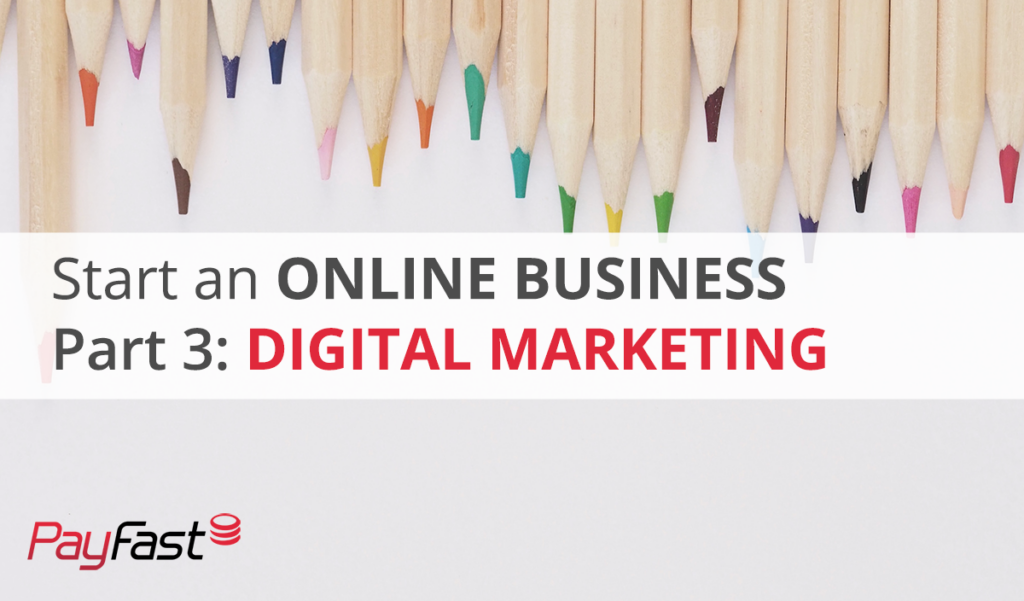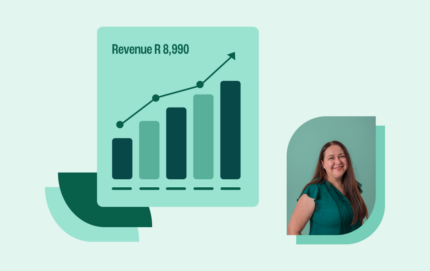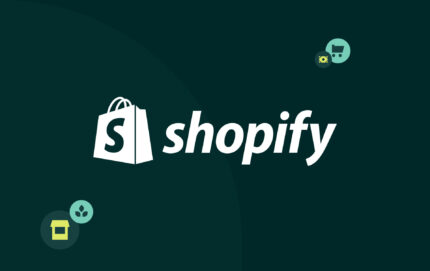You’ve done your research in Part 1 and you’ve built your store in Part 2. So where are the customers? Now it’s time to play the long game where digital marketing and driving traffic to your store becomes an essential part of your online business.
You don’t need to become a world expert in the digital marketing strategies we’ve listed below. By just learning the basics and implementing a few strategies you will see all the difference to your business.
Search Engine Optimisation (SEO)
You’ve probably heard this term being thrown around, SEO is the steps you take to get your website to rank on the first page of a search engine results page (SERP). Google is the most popular search engine, which is why most businesses focus their SEO efforts there. If you’re starting out all you need to do is make sure your website is search engine friendly.
Here are some other basic things you can do to improve your SEO:
On-page SEO
This refers to the tweaks you make to your own website to make sure it ranks on Google. Google will rank/index your website pages based on what it thinks they are about. Google only indexes and displays pages, not entire websites, so it’s crucial to optimise each page you would like to rank for and not just the homepage. Here’s how:
Set up a Search Console Account
This will enable you to see which pages of your site are being indexed. (Under the ‘Google Index’ tab you will be able to check the index status of your website pages).
A keyword rich URL
Include descriptive keywords relating to the content of your page in the URL and try to avoid URLs that don’t make sense to the reader (e.g. https://domain.com/cat/?cid=7078 is a BAD URL).
The more readable your URL is for humans, the better!
A meaningful and unique title tag
Ever wondered how those blue clickable headlines make it into the search result pages of Google? These are determined by the title tag, which should give a concise description of what the page is about.
H1 tags for your main headings
The main heading of your page should be formatted <h1>Your page heading</h1> in the HTML. Google looks at h1 tags to determine what the rest of the page is about, so make sure it communicates just that and avoid having more than one h1 tag per page.
Alt tags for images
Add alt tags for each image you upload. Alt tags are needed to describe what the image is about, which helps Google better match search queries with relevant results. Take a look at Google’s image publishing guidelines for best practices.
Internal links
Internal links are links within your site that link to other pages on your website. Make sure the pages you want to prioritise have 2-3 internal links on them. In Google’s Search Console you can check the internal links of your website. If the URLs highest on the list aren’t your website’s most important pages, then you may need to reassess your internal linking structure.
User Experience
Google doesn’t just look at content on your pages. It also looks at the usability of your site. Two key factors are:
- Responsive design: Most template themed websites will have responsive design, but it’s always good to check how your site scales down when viewed on other devices like tablets or mobile phones.
- Site speed: No one likes a website that takes ages to load. To see what your score is and what Google’s recommendations are to improve the site speed, submit your website using the PageSpeed Insights tool. If you can’t implement the fixes yourself, it’s worth running the results past a web developer.
Off-page SEO
This refers to the things you do off of your website to rank on Google.
Back (inbound) links
Most off-page SEO relates to a good inbound or backlink strategy. Backlinks are links that point to your website from other websites. Google places a lot of value on good quality backlinks to your website, since this signals that your website must have good quality content. For more info check out this guide to building backlinks.
Keywords
Finding out what people are searching for in relation to your product will help you increase your rank on Google by including these keywords within the content of your site.
- Use the Adwords Keyword Planner for insights into monthly search volumes and trends as well as new keyword ideas which you can include on your website and in your content.
- On your Google Search Console, you can view a Search Analytics Report which shows keywords people googled to find your website. This can be helpful to improve your site’s search performance.
Google Analytics
Set up your Google Analytics account to track traffic to your site. Again, you do not need to become the world’s expert. Learn the basics so you can understand who is coming to your site and from where so you can better target these people.
Google Adwords
You’ve seen these before when you search for something on Google and the top results have a tiny ‘Ad’ on the left side of the text or when you see images pop up on your screen that look like advertising banners. With Google Adwords, you can set up search, display, video or app ads to help drive more traffic to your site. It’s a free service where you only pay when someone clicks on your ad (pay-per-click / PPC). Set up your Google Adwords account and here is a handy Google Adwords Guide to help you get started. If you find this marketing avenue is really helpful to you then here are some great courses to learn more.
Blogging
Basically, every ecommerce store needs a blog and most shopping cart platforms will have this functionality, here’s why:
- Increases traffic to your site
- Turns visitors into loyal customers
- Great way to create quality content on your site for SEO
- Showcases what you are up to and lets your customers know you’re an expert in your field
Social Media
Social media marketing is as powerful as ever, especially for small businesses that have a very small marketing budget. The most important thing is to choose the platforms most relevant to your business.
- More platforms = less quality content and less manpower to manage them all
- Product based businesses do well on Facebook and Instagram
- Facebook Ads and promoted posts require little budget to reach lots of customers
- Kill two birds with one stone by creating Instagram ads from your Facebook Ad account
- Social media makes it easy for your customers to contact you. Facebook and Twitter work well for this.
Email Marketing
A user-friendly email service provider like Mailchimp can help you connect with your customers directly in their inbox. By encouraging people to sign up to your mailing list you can:
- Build a database of loyal, repeat customers
- Keep your customers up to date on your business
- Share blog posts, new stock, special offers and competitions
- Learn more about your customers and what they enjoy so you know what to do more of.
Absolutely DO NOT go and buy a database! Rather let customers sign up to your mailing list and send mailers to people who actually want to receive them.
That’s quite a lot to wrap your head around. You don’t need to implement every single one of these strategies all at once. Choose ones that work for you and you will find as your business grows so will your marketing strategies (and your confidence to take on more).
As we said before, running an ecommerce store is a long game and you won’t see results on the first day let alone the first month. Take it slow, ask for help and don’t be afraid to try and test new things and with that, we’ll leave you to get started on your new business venture.
To stay up to date with the latest PayFast news and updates, visit our website and follow us on Instagram, Twitter, LinkedIn or Facebook.




